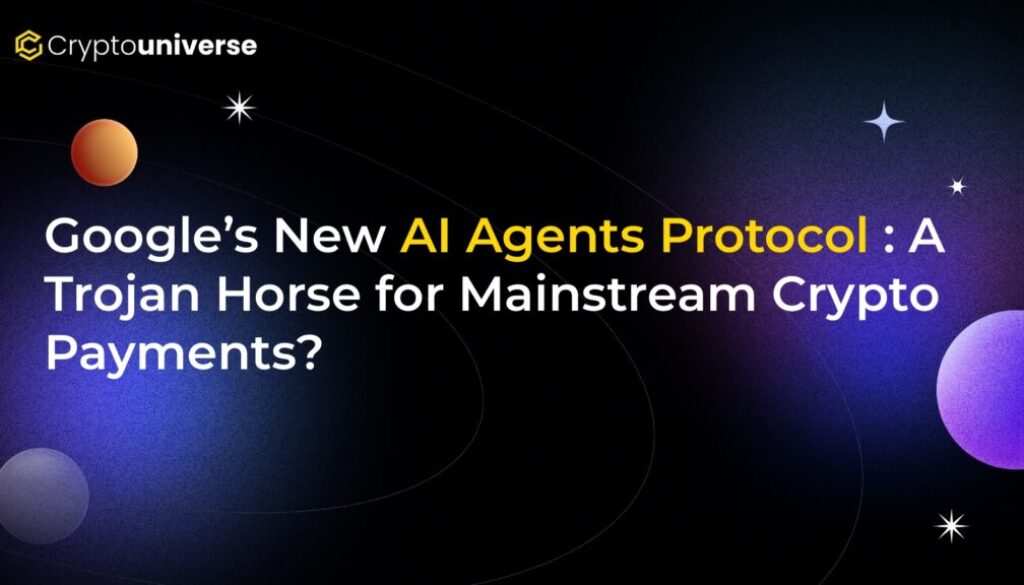Google’s New AI Agents Protocol: A Trojan Horse for Mainstream Crypto Payments?

The Next Frontier of E-Commerce: AI That Shops for You
Imagine a future where you don’t just search for products online—you deploy a personal AI assistant to do the entire shopping trip for you. This isn’t science fiction; it’s the next major leap in technology, and companies like Google, Amazon, and Microsoft are racing to build it. These autonomous, goal-driven “AI agents” are designed to understand your needs, scour the internet for the best deals, and complete purchases on your behalf. But this new paradigm raises a critical question: How do you pay for things securely and efficiently in a world where AI makes the transactions?
Google’s parent company, Alphabet, believes it has the answer. The tech giant recently unveiled a groundbreaking new framework that could not only define the future of AI-driven commerce but also provide a massive boost for cryptocurrency adoption in everyday life. This is Google’s new
What is Google’s Agent Payments Protocol (AP2)?
Developed in collaboration with over 60 industry heavyweights, including Mastercard, American Express, and PayPal, the Agent Payments Protocol (AP2) is an open, shared framework designed to create a common language for transactions conducted by AI agents. Its primary goal is to establish a secure and trustworthy environment for this new form of commerce.
The secret sauce behind AP2’s security is a concept Google calls “Mandates.” Think of a Mandate as a tamper-proof, digitally signed contract. Here’s how it works:
- User Instructions: You give your AI agent a specific instruction, like “Buy me the best noise-canceling headphones under $300.”
- Cryptographic Signature: This instruction is locked into a digital “Mandate” and signed using verifiable credentials, creating an unchangeable record of your authorization.
- Verifiable Proof: This signed Mandate acts as the foundational evidence for every step of the transaction, ensuring the AI agent only acts on your explicit, verified commands.
This use of cryptographic signatures and verifiable proofs builds a layer of trust that is essential for users to feel comfortable letting an AI handle their money.
The Crypto Connection: Why AP2 is a Game-Changer
While the AI technology is impressive, the most exciting part for the blockchain community is what AP2 supports under the hood. Google has confirmed the protocol is designed to be payment-agnostic, supporting a wide range of methods:
- Credit and debit cards
- Real-time bank transfers
- Stablecoins
The inclusion of stablecoins is a monumental step. For years, one of the biggest hurdles for cryptocurrency has been its limited use in daily, real-world purchases. Volatility and complex transaction processes have kept most digital assets in the realm of investment and speculation.
AP2 could change that entirely. By integrating stablecoins directly into a next-generation payment protocol backed by Google and major financial institutions, it tears down the barrier between traditional finance and the digital asset economy. As economist Ed Yardeni noted, this development has the crypto markets buzzing because “AP2’s ease of payment could change that” long-standing problem of crypto’s limited real-world utility.
Imagine your AI agent seamlessly paying for goods using a stablecoin like USDC or USDT, with the transaction being as simple and fast as using a credit card. This could be the catalyst that finally pushes crypto payments into the mainstream.
An Industry-Wide Shift
Google isn’t alone in this endeavor, which only reinforces the significance of the trend. The entire tech and finance landscape is moving toward a similar future:
- Amazon: The e-commerce giant is testing its “Buy For Me” feature, an AI shopping agent designed to search the entire web for products, not just Amazon.com.
- Mastercard: In partnership with Microsoft, Mastercard has launched its own “MasterCard Agent Pay” to facilitate secure AI transactions.
- Visa: The payment network is developing its “Intelligent Commerce” tool, which uses tokenized digital credentials to replace sensitive credit card details, enhancing security.
This industry-wide push signifies a fundamental shift in how we think about digital commerce. The future is automated, intelligent, and increasingly built on principles of cryptographic security pioneered by the blockchain world.
Conclusion: A Bridge to the Future of Finance
Google’s Agent Payments Protocol is more than just a new piece of tech; it’s a foundational layer for the next era of the internet. By creating a secure and open standard for AI-driven transactions and, crucially, embracing stablecoins as a first-class payment method, Google is building a powerful bridge between the existing financial system and the burgeoning world of digital assets. While the focus today is on AI agents, the long-term impact could be the seamless integration of cryptocurrency into our daily economic lives, turning the dream of mainstream adoption into a tangible reality.


